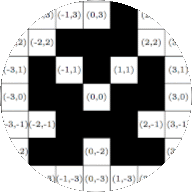Skip to main content Contents Index Prev Up Next \(\newcommand{\longdivision}[2]{#1\big)\!\!\overline{\;#2}}
\newcommand{\mlongdivision}[2]{\longdivision{#1}{#2}}
\renewcommand{\emptyset}{\{\}}
\newcommand{\blanksp}{\underline{\hspace{.25in}}}
\newcommand{\set}[1]{\left\{#1\right\}}
\newcommand{\cspace}{-}
\newcommand{\Ta}{\mathtt{a}}
\newcommand{\Tb}{\mathtt{b}}
\newcommand{\Tc}{\mathtt{c}}
\newcommand{\Td}{\mathtt{d}}
\newcommand{\Te}{\mathtt{e}}
\newcommand{\Tf}{\mathtt{f}}
\newcommand{\Tg}{\mathtt{g}}
\newcommand{\Th}{\mathtt{h}}
\newcommand{\Ti}{\mathtt{i}}
\newcommand{\Tj}{\mathtt{j}}
\newcommand{\Tk}{\mathtt{k}}
\newcommand{\Tl}{\mathtt{l}}
\newcommand{\Tm}{\mathtt{m}}
\newcommand{\Tn}{\mathtt{n}}
\newcommand{\To}{\mathtt{o}}
\newcommand{\Tp}{\mathtt{p}}
\newcommand{\Tq}{\mathtt{q}}
\newcommand{\Tr}{\mathtt{r}}
\newcommand{\Ts}{\mathtt{s}}
\newcommand{\Tt}{\mathtt{t}}
\newcommand{\Tu}{\mathtt{u}}
\newcommand{\Tv}{\mathtt{v}}
\newcommand{\Tw}{\mathtt{w}}
\newcommand{\Tx}{\mathtt{x}}
\newcommand{\Ty}{\mathtt{y}}
\newcommand{\Tz}{\mathtt{z}}
\newcommand{\So}{\Tf}
\newcommand{\Sno}{\Tg}
\newcommand{\Si}{\Th}
\newcommand{\Sni}{\Tj}
\newcommand{\N}{\mathbb{N}}
\newcommand{\Z}{\mathbb{Z}}
\newcommand{\W}{\mathbb{W}}
\newcommand{\ZZ}{\Z}
\newcommand{\PP}{\mathbb{P}}
\newcommand{\Q}{\mathbb{Q}}
\newcommand{\R}{\mathbb{R}}
\newcommand{\RR}{\R}
\newcommand{\F}{\mathbb{F}}
\newcommand{\A}{\mathbb{A}}
\newcommand{\abs}[1]{|#1|}
\newcommand{\fmod}{\bmod}
\newcommand{\fdiv}{\,\mathrm{div}\,}
\newcommand{\lcm}{\mathrm{lcm}}
\newcommand{\id}{\mathrm{id}}
\newcommand{\nr}[1]{\##1}
\newcommand{\gexp}[3]{#1^{#2 #3}}
\newcommand{\gexpp}[3]{\displaystyle\left(#1\right)^{#2 #3}}
\newcommand{\glog}[3]{\log_{#1}^{#3}#2}
\newcommand{\sol}[1]{{\color{blue}\textit{#1}}}
\newcommand{\gro}[1]{{\color{gray}#1}}
\newcommand{\todo}[1]{{\color{purple}TO DO: #1}}
\newcommand{\fixme}[1]{{\color{red}FIX ME: #1}}
\newcommand{\checkme}[1]{{\color{green}CHECK ME: #1}}
\newcommand{\degre}{^\circ}
\newcommand{\vect}[1]{\overrightarrow{#1}}
\newcommand{\nix}{}
\newcommand{\cox}[1]{\fcolorbox[HTML]{000000}{#1}{\phantom{M}}}
\newcommand{\tox}[1]{\texttt{\##1} \amp \cox{#1}}
\newcommand{\ttx}[1]{\texttt{\##1}}
\newcommand{\mox}[1]{\mathtt{\##1}}
\newcommand{\xx}{\mathtt{\#}}
\newcommand{\lt}{<}
\newcommand{\gt}{>}
\newcommand{\amp}{&}
\definecolor{fillinmathshade}{gray}{0.9}
\newcommand{\fillinmath}[1]{\mathchoice{\colorbox{fillinmathshade}{$\displaystyle \phantom{\,#1\,}$}}{\colorbox{fillinmathshade}{$\textstyle \phantom{\,#1\,}$}}{\colorbox{fillinmathshade}{$\scriptstyle \phantom{\,#1\,}$}}{\colorbox{fillinmathshade}{$\scriptscriptstyle\phantom{\,#1\,}$}}}
\)
Part I Integers and Algorithms
In these notes we assume some familiarity with the integers and the operations plus, minus, and times. We first cover properties of the integers that will be familiar to most students and use them to introduce the language of mathematics. We discuss basic notions about mathematical statements that will help you to read definitions and theorems (
Chapter 1 ). We then introduce a way of formulating algorithms and encounter some basic algorithms for computations with integers (
Chapter 2 ). This is followed by algorithms for division, applications of the output of the division algorithm in
Chapter 3 , and an algorithm for computing greatest common divisors (
Chapter 4 ). As an application of the latter we present Bézout’s identity.

